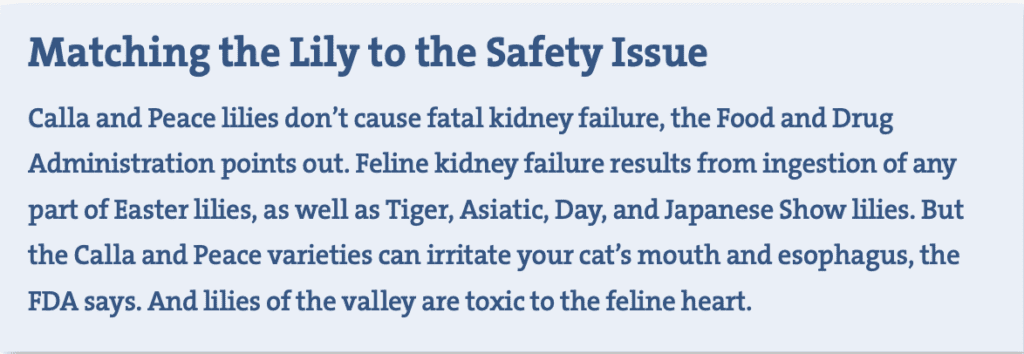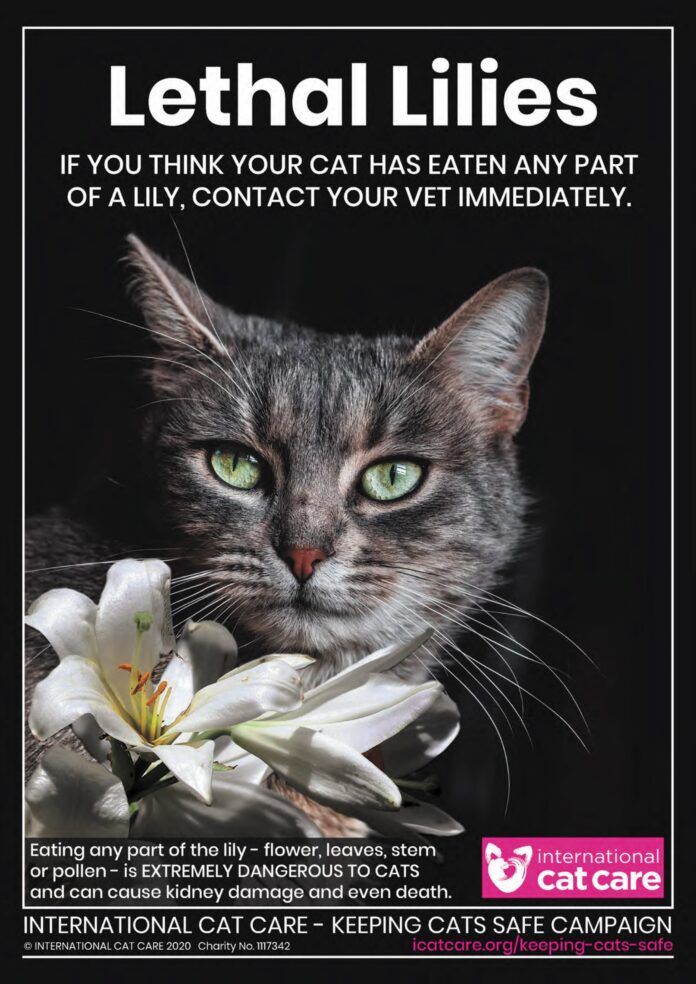Some nurseries advertise that pollen-free lilies are safe for cats. They’re not. In fact, all parts of the lily plant are poisonous for felines. A cat can suffer fatal kidney failure just from nibbling on a lily leaf or even drinking water from a vase with cut lilies in it. It doesn’t have to be the pollen that’s released from little pods atop the thin filaments in the middle of the flower.
The danger from eating any part of a lily is so great that if you have lilies in the house or in a garden that’s accessible to your pet and notice your cat suddenly seeming seriously ill, you need to get her to the emergency room as quickly as possible. Her kidneys can very quickly stop producing urine, and if they do, she might die. With lily ingestion, there is zero time to lose. Even if your pet lives, she will most likely be in the hospital for a couple of days on an IV drip.
Believe us, we know. Lilies are one of the three substances responsible for the majority of poisonings for which cats are brought to the small animal hospital at Tufts. (The other two are acetaminophen, the generic name for Tylenol, and topical anti-flea products meant for dogs but mistakenly applied to cats; they contain too much of the active ingredient permethrin.)

To help those who have cats avoid the danger — and also the heartache — International Cat Care and Australia’s Centre for Veterinary Education at the University of Sydney have collaborated in designing a poster that can be displayed at the point of sale in supermarkets, florists, and other outlets that sell flowers. Entitled “Lethal Lilies,” it makes the point succinctly that cats and lilies do not go together, whether or not there is pollen.




